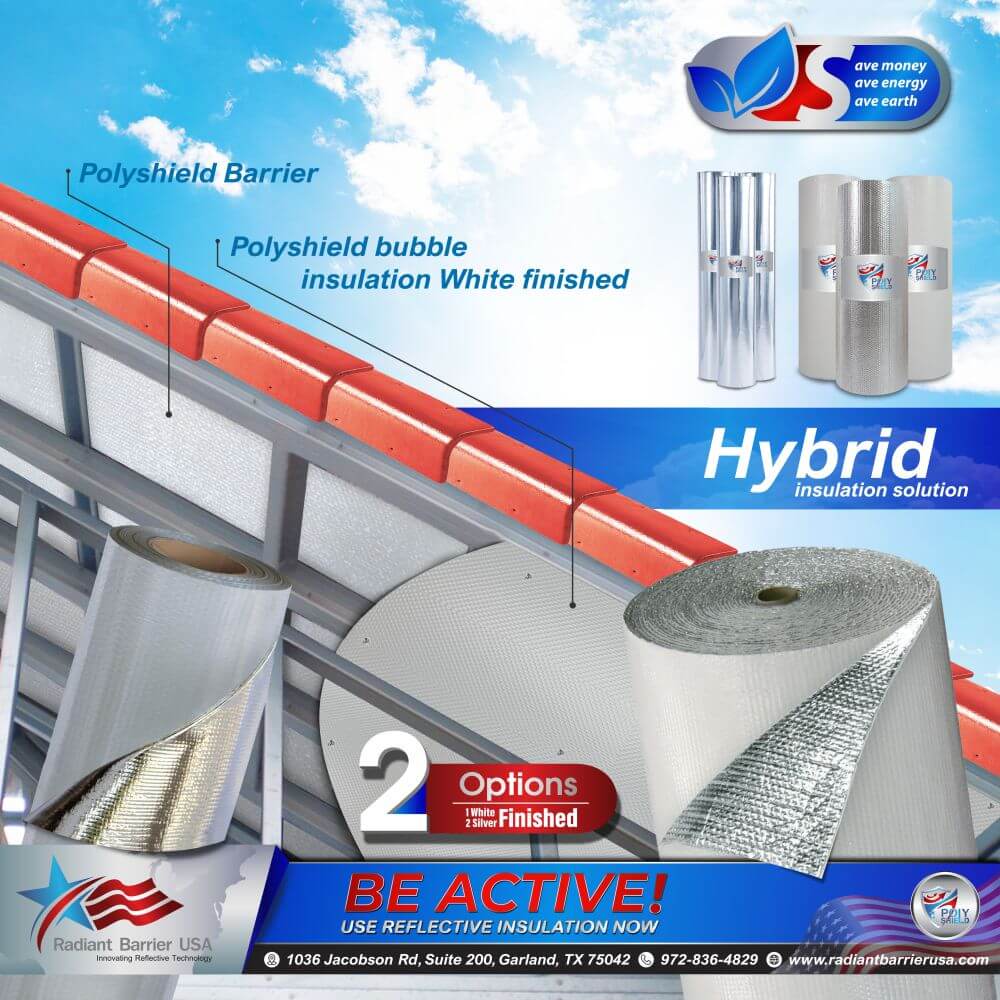First off, why would I even need to insulate my metal building?
When it’s hot outside, the metal building becomes super-heated on the inside, much like an oven. Metal is a wonderful conductor of heat, and the heat of the sun’s rays radiating directly onto the metal will cause the inside of the metal building to literally act like an oven. However, simply using radiant barrier on the walls and ceilings will reflect up to 95% of the radiant heat from the sun, which makes a livable temperature easier to maintain, keeping workers and animals much healthier year ‘round and saving lots of money on your energy bills.
When it’s cold outside, any moist air inside the building that comes in contact with a metal wall/roof which is colder on the outside will cause condensation to form on the interior of the metal panels. It doesn’t take much condensation forming for the water to start pooling. This phenomenon can make it appear that your roof is failing & rainwater is getting through.
WATER + METAL = A RECIPE FOR DISASTER
Foam Insulation has been a popular insulation solution for metal building systems over the years because it provides a vapor barrier and a moisture barrier while providing a substantial R-value. Unfortunately, the cost of purchasing foam insulation has risen dramatically.
However, mass insulation like foam insulation is used to slow down the loss or gain of heat within a metal building. It provides a barrier between the inside of the metal and the significantly different temperatures outside of the metal building. Radiant barrier or foil insulation differ from fiberglass insulation in that, instead of slowing down the process of heat transfer, it blocks and reflects heat.
R-value versus Emissivity
Foam insulation’s resistance to heat transfer is measured by an R-Value. Of course, R-Values refer only to conductive heat transfer.
Radiant Barrier’s heat resistance is measured by emissivity. Emissivity only measures radiant heat resistance.
The predominate heat transfer which a metal building experiences in the summer months is from the radiating heat of the sun. In fact, 93% of the heat gain that a metal building experiences in the summer months can be attributed to radiation. During the winter months, 75% of a metal building’s heat loss can be attributed to radiation.
Foam insulation can be 90% emissive, which means 90% of the radiant energy that meets the fiberglass is transferred through the insulation into the interior of the metal building.
The Benefits of the “All Weather System”
The All-Weather System combines the benefits of conductive mass insulations and reflective radiant barrier insulations.
In short, foam Insulation performs at its best during winter months because it holds heat and slows the loss of heat during the cold months, keeping the building warmer. Unfortunately, this feature hampers its efficiency during summer months.
Radiant Barrier performs at its best during the summer months as it blocks heat, keeping the building cooler and reducing energy costs.
Combining the benefits of both types of insulation maximizes the metal building’s thermal efficiency for all seasons, increasing comfort while cutting insulation costs dramatically.
How to cut installation cost using HALF of the foam insulation,
and still provide a vapor barrier, moisture barrier, a higher R-Value and adding reflectivity:
For Walls: This diagram demonstrates just two inches of foam insulation. Closed cell foam is an R-10, the two inches of dead air space is an additional R-11, for a combined R-Value of 21. The Radiant Barrier in the RadWrap can improve the efficiency of the insulation by 50% while providing a washable, clean, durable, white finished wall.

For Ceilings: This diagram demonstrates just two inches of foam insulation, closed cell foam is an R-10, the two inches of dead air space is an additional R-11, for a combined R-Value of 21. The Radiant Barrier in the RadWrap can improve the efficiency of the insulation by 50%, while providing a washable, clean white wall.
This installation method greatly decreases installation costs while improving the thermal efficiency of metal buildings.

972-836-4829

